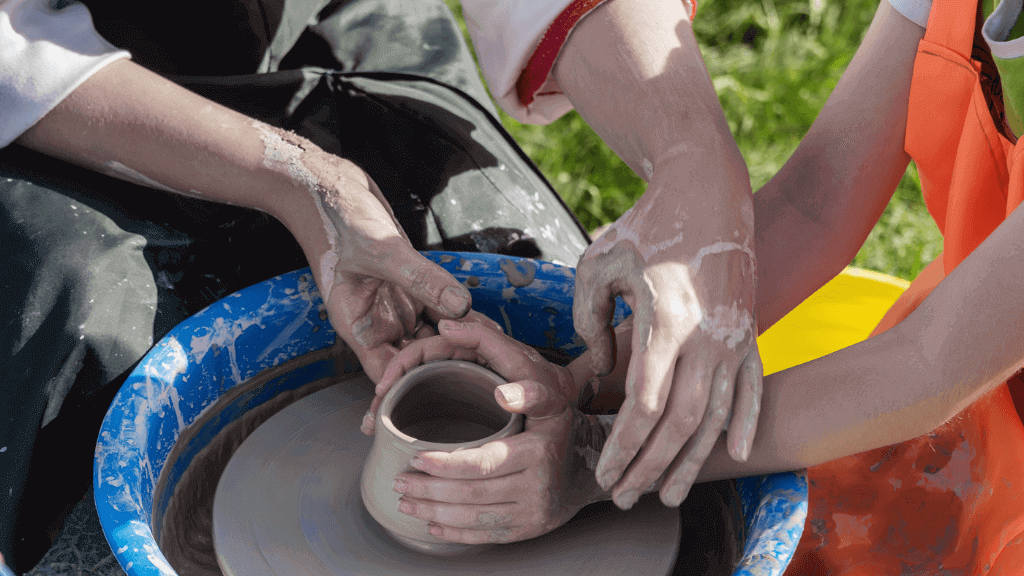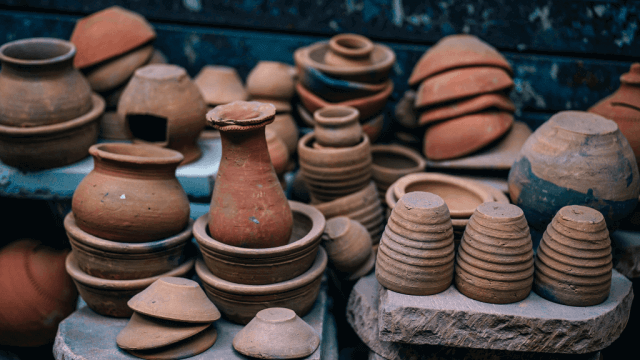Pottery wheels usually spin between 100 to 150 rpm, which is half to one-third of the original wheel speed. However, the top speed of a pottery wheel can be up to 300 rpm. Electric pottery wheels now have variable speed control and can range from 0 to 240 RPM or higher. The most common speed for a pottery wheel is between 240 to 300 rpm.
What factors can affect the speed of a pottery wheel, and how do they impact the final product?
The speed of a pottery wheel can be affected by several factors, including the type of wheel (kick or electric), the skill level of the potter, and the desired outcome. A faster speed can make it more difficult to shape clay , while a slower speed may result in a longer throwing process. The final product can also be impacted by the speed at which it was created. For example, too much rotational speed can cause negative effects on the throw. Experimenting with different speeds is important to find one that is fast enough to shape clay but not so fast that control is lost.
Are there different types of pottery wheels with varying speed capabilities, and how do they differ from one another?
Yes, there are different types of pottery wheels with varying speed capabilities. There are two main types of pottery wheels: motorized (electric) and kickwheels. Pottery wheels can range in price from just over $400 to almost $1,500. Most pottery wheels have variable speed control functions. When choosing a wheel, consider the size, weight, and type of frame and table top that will work for your studio.
How do potters adjust the speed of their wheel to achieve different effects or accommodate different types of clay?
Potters adjust the speed of their wheel by depressing the foot pedal or treadle, which increases the torque the motor applies to the wheelhead. The speed depends on personal preference, with some potters preferring a slower wheel because it lets them shape the clay easier. Some wheels are now being made so that the rotation of the wheel head can be reversed, allowing left-handed throwing. Potters use their hands with and against centrifugal force to shape clay as it revolves in a horizontal plane.
Are there any safety considerations that potters need to keep in mind when operating a pottery wheel at high speeds?
Yes, there are safety considerations that potters need to keep in mind when operating a pottery wheel at high speeds. Some of these include:
• Personal injury from improper use
• Slip, trip, and fall hazards
• Lack of personal instruction and permission from staff
• Loose clothing or jewelry that can get caught in the clay or wheel head
It is important to be aware of these hazards and take appropriate precautions when using a pottery wheel.
How does the speed of a pottery wheel compare to other types of spinning machines, such as lathes or centrifuges?
The speed of a pottery wheel varies based on personal preference. A potter’s wheel is used to shape clay into round ceramic ware. The wheel rotates while the potter’s hands are free to shape the clay. It is not appropriate to compare the speed of a pottery wheel to other types of spinning machines, such as lathes or centrifuges, because they serve different purposes and operate differently. Lathes are used for cutting, drilling, and sanding materials like wood or metal , while centrifuges are used for separating fluids or particles based on density.











